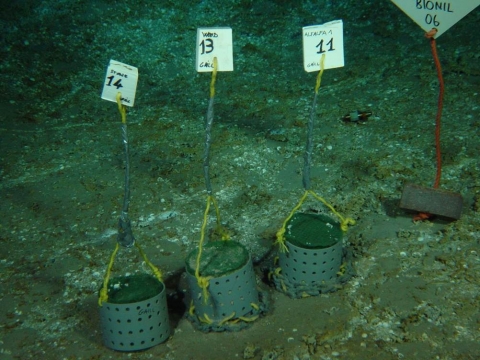
Colonization of plant substrates at hydrothermal vents and cold seeps in the northeast Atlantic and Mediterranean and occurrence of symbiont-related bacteria.
de Szafranski K.M., Deschamps P., Cunha M.R., Gaudron S., Duperron S., Front. Microbiol., 27 February 2015 | doi: 10.3389/fmicb.2015.00162
Reducing conditions with elevated sulphide and methane concentrations in ecosystems such as hydrothermal vents, cold seeps or organic falls, are suitable for chemosynthetic primary production. Understanding processes driving bacterial diversity, colonization and dispersal is of prime importance for deep-sea microbial ecology.
This study provides a detailed characterization of bacterial assemblages colonizing plant-derived substrates using a standardised approach over a geographic area spanning the North-East Atlantic and Mediterranean. Wood and alfalfa substrates in colonization devices were deployed for different periods in distinct geographic areas. Colonization occurred within the first 14 days, and communities stabilized during the first year. Communities in long-term deployments were different, and their composition was mainly influenced by the geographical location where devices were deployed. Numerous sequences related to horizontally-transmitted chemosynthetic symbionts of metazoans were identified, of which they might represent free-living forms. Efficient colonization capabilities might be an important feature of their lifestyle.
Contact BOREA : Sébastien DUPERRON, Team 3

